Tattoo History: The Origin of Tattoos
Tattoo History: From Ancient Traditions to Digital Trends
In this article, we will explore the art of tattooing, taking an engaging journey through its rich history.
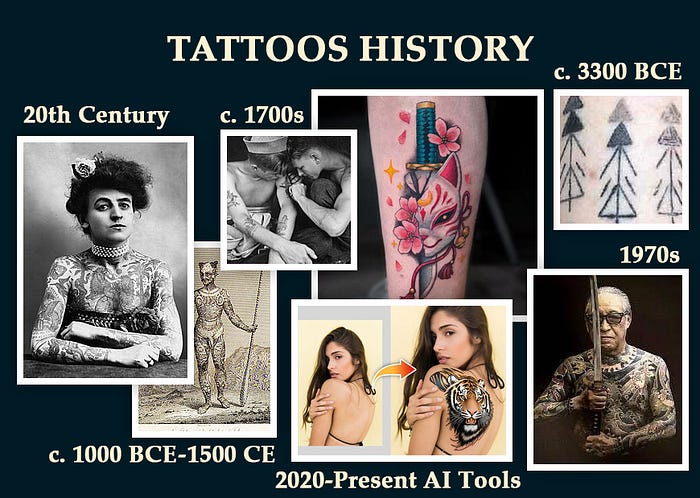
Tattoo art has a rich, complex history that spans thousands of years and cultures. From ancient practices to modern movements, tattooing has been a medium for personal expression, cultural identity, and even rebellion.
Here is a journey through the history of tattoo art, highlighting key periods, dates, and figures who helped shape tattooing as we know it today.
Who invented tattoos?
When we talk about ancient tattooing, we are referring to a long history that goes back thousands of years.
Tattoos were not “invented” by a single person but rather developed independently across various ancient cultures, including Egyptians, Polynesians, Japanese, and indigenous peoples worldwide, each using tattoos for cultural, spiritual, and decorative purposes over thousands of years.
1. Origins of Tattooing in Ancient Cultures (c. 3300 BCE)
The first tattoo: Ötzi the Iceman tattoos
Tattooing likely began as early as the Neolithic period, evidenced by the discovery of Ötzi the Iceman, a mummified man from around 3300 BCE found with over 60 tattoos on his body.
These early tattoos, primarily made of soot or ash, may have served therapeutic or ritualistic purposes.
- Key Figures: Ötzi the Iceman
- Regions: Europe (the Alps), ancient Egypt, and Japan
Around 2000 BCE, tattoos appeared in ancient Egyptian culture as markers of social status and protection, especially among women. Other early evidence of tattooing can be found in pre-Columbian societies in the Americas and among Polynesian cultures, where tattoos were a part of spiritual and social life.
2. Tattooing in Polynesia and Indigenous Cultures (c. 1000 BCE — 1500 CE)
The tattoos evolution continued with Polynesian tattooing, known for its intricate geometric patterns, that has one of the most established historical traditions. Polynesians used tattoos to symbolize rank, social standing, and spiritual beliefs. The word “tattoo” is derived from the Polynesian word “tatau,” meaning “to strike,” reflecting the tattooing technique.
- Key Regions: Polynesia, New Zealand, Samoa, and Hawaii
- Key Figures: Māori warriors of New Zealand, with traditional moko facial tattoos

In Samoa, tattooing continues to be a sacred art form today, using methods similar to those developed centuries ago. In New Zealand, Māori moko tattoos were deeply significant, identifying a person’s lineage, achievements, and identity.
3. Medieval Europe and the Spread of Tattooing (c. 1000–1600 CE)
The tattoo art history brings us to the tattooing in medieval Europe that became associated with pilgrimages and religious devotion. Crusaders and pilgrims returning from the Middle East were often marked with crosses or other religious symbols to signify their devotion.
- Key Regions: Europe, the Middle East
- Key Practices: Christian pilgrims would sometimes get tattoos in the Holy Land to commemorate their journeys.
However, as tattooing spread, it also faced backlash from certain European authorities and the Christian church, leading to its decline in the Western world by the late Middle Ages.
4. Colonial Encounters and the Western Tattoo Revival (c. 1700s)
The tattoo history continues with the 1700s period of time, when European explorers began to document and adopt tattoo practices from indigenous cultures they encountered. The famous British explorer Captain James Cook and his crew, who sailed to the South Pacific, were instrumental in introducing the word “tattoo” and Polynesian tattooing practices to Europe.
- Key Figures: Captain James Cook
- Key Dates: 1769 — Cook’s first voyage to Tahiti and the South Pacific
- Impact: Tattoos became popular among sailors, who often got tattoos as souvenirs of their journeys.
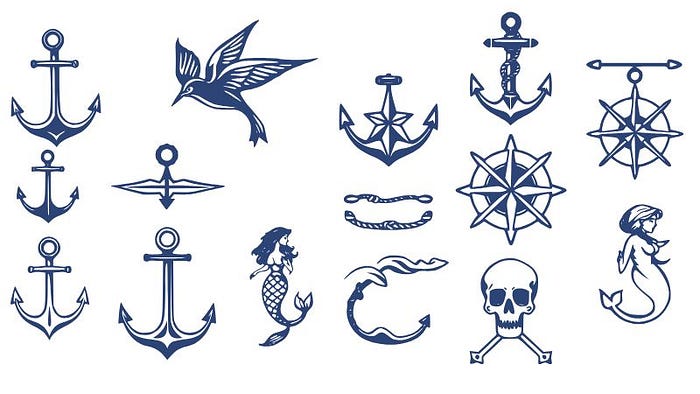
The tattoo culture developed a distinct, nautical style with symbols like anchors, swallows, and mermaids, becoming popular among sailors and adventurers.
5. The Invention of the Tattoo Machine (1891)
A pivotal moment in the history of tattooing was the invention of the tattoo machine.

The 19th century saw significant advances in tattooing technology, most notably the invention of the electric tattoo machine by Samuel O’Reilly in 1891. This machine, based on Thomas Edison’s electric pen, revolutionized tattooing, making it faster, more affordable, and more accessible.
- Key Figures: Samuel O’Reilly
- Key Dates: 1891 — Patent for the electric tattoo machine
- Impact: The tattoo machine helped expand tattooing into mainstream Western culture, as tattoo shops began to appear in major cities.
6. Tattooing in 20th Century Western Culture
By the early 1900s, tattooing had become popular among various subcultures in the U.S. and Europe, including circus performers, soldiers, and rebellious youth. Tattoos symbolized adventure and defiance, though they were still often stigmatized.
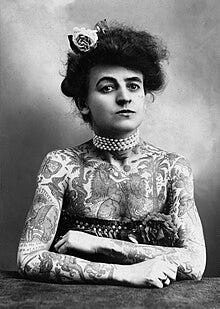

- Key Figures: Norman “Sailor Jerry” Collins, an influential tattoo artist known for his bold and colorful designs
- Key Dates: 1930s-1970s — Sailor Jerry popularized the “Old School” style, using American imagery like eagles, roses, and pin-up girls.
World War II further popularized tattoos among soldiers and sailors, who often got inked as symbols of camaraderie or remembrance. Meanwhile, tattoos became more elaborate with the influence of Asian styles, especially Japanese irezumi, a centuries-old practice featuring dragons, koi fish, and mythical themes.
7. The Rise of Modern Tattoo Culture (1970s — Present)
The 1970s marked a turning point for tattooing as it entered mainstream culture and was embraced by artists, musicians, and celebrities.
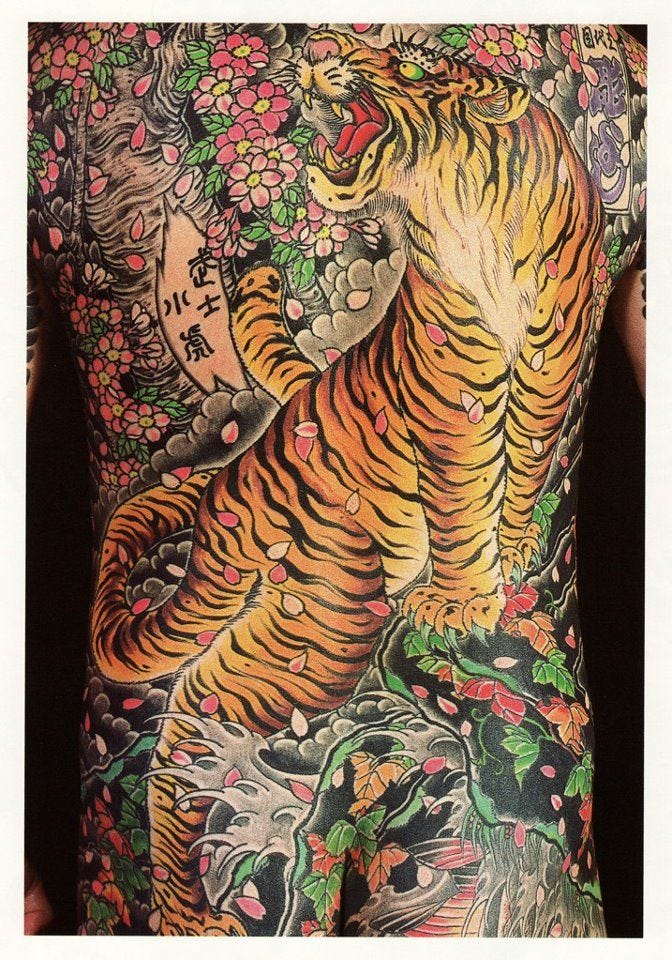
The tattoo renaissance began as tattooing was increasingly seen as a legitimate art form, and tattoo shops proliferated worldwide.
- Key Figures: Ed Hardy, known for elevating tattooing to fine art status, and Horiyoshi III, a Japanese tattoo master
- Key Dates: 1970s — The tattoo renaissance; 1990s — Tattooing becomes widely accepted in pop culture.
- Impact: Tattooing has become mainstream, with a variety of styles emerging, including tribal tattoos, biomechanical designs, and realism.
Today, tattooing is more diverse than ever, with styles ranging from minimalist line work to hyper-realistic portraits. Tattoo artists continue to push boundaries, using techniques influenced by digital art, fine art, and cultural heritage.
8. Tattooing in the Digital Age (2000s — Present)
In recent years, technology has further transformed tattooing.
Digital tools and social media allow artists to reach global audiences, showcase their work, and connect with clients worldwide. AI and virtual reality also allow people to visualize and design tattoos before committing.
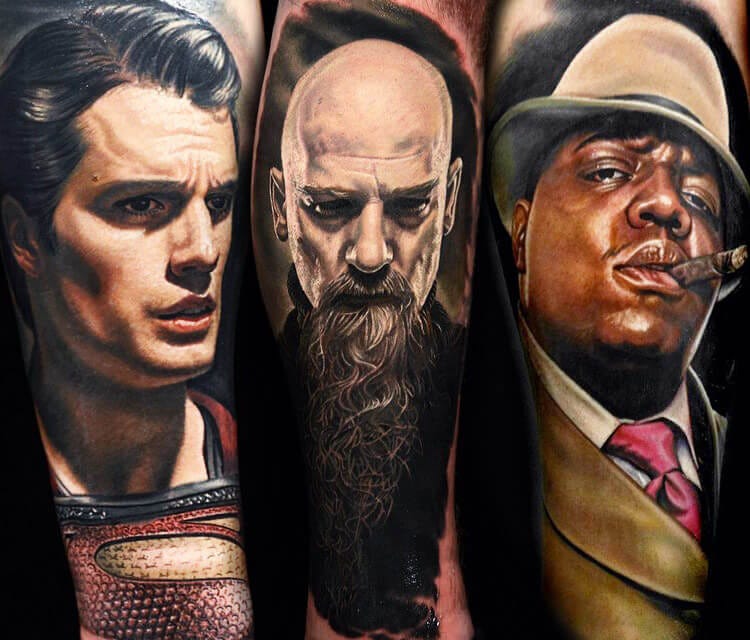

- Key Figures: Nikko Hurtado, a pioneer of realistic color portraits, and Kat Von D, who popularized tattoo culture through media.
- Impact: Tattooing is now widely accepted and celebrated as a form of self-expression and artistry, with artists regularly collaborating and sharing innovations. Famous tattoos are decorating the skin of celebrities worldwide.
9. Tattooing with AI
AI is increasingly influencing the tattooing industry in several innovative ways, enhancing both the creative and practical aspects of tattoo design and application.
Here are some key areas where AI is involved in tattooing:
- Tattoo Design: An AI tattoo generator can make unique tattoo designs based on user input, preferences, and trending styles. This allows tattoo artists and clients to explore a wide variety of options, including intricate patterns, symbols, and personalized artwork.
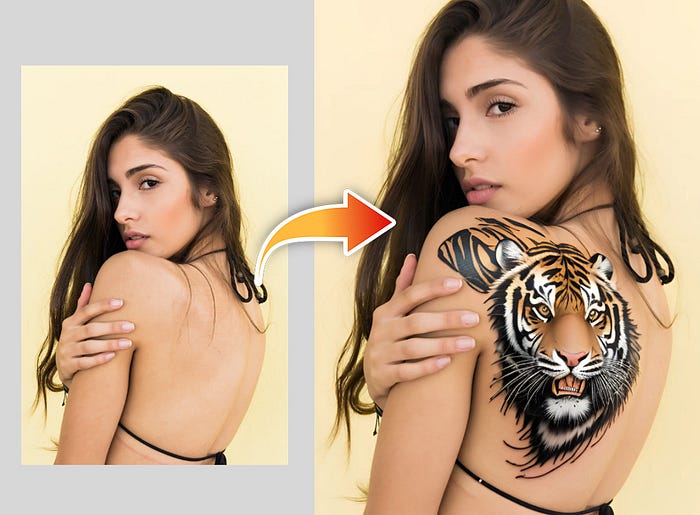
- Visualization Tools: AI-powered apps allow clients to preview how a tattoo will look on their skin. By using augmented reality (AR), users can virtually “try on” tattoos, helping them make more informed decisions about placement, size, and design before the actual tattooing process.
Tattoos have cultural significance in many countries around the world, each with its unique styles and meanings.
Here are some notable types of tattoos associated with various countries:
1. Japan
- Irezumi Tattoos: Traditional Japanese tattoos characterized by large, colorful designs featuring dragons, koi fish, cherry blossoms, and geishas. They often cover significant portions of the body and are rich in symbolism.
2. Polynesia
- Tatau Tattoos: This traditional practice involves intricate patterns and symbols, often covering large areas of the body. Each design has cultural significance, telling the wearer’s story or lineage. Samoan and Maori tattoos are well-known examples.
3. China
- Traditional Chinese Tattoos: Often incorporate symbols like dragons, phoenixes, and lotus flowers, each representing different meanings, such as strength, beauty, and resilience.
4. Native American
- Tribal Tattoos: Various Native American tribes have distinct tattoo styles that often include symbols related to spirituality, nature, and tribal identity. Designs may feature animals, elements, and geometric patterns.
5. Mexico
- Day of the Dead Tattoos: Celebrating the Day of the Dead, these tattoos often include colorful skulls (calaveras), marigolds, and other motifs that honor deceased loved ones and reflect Mexican culture.
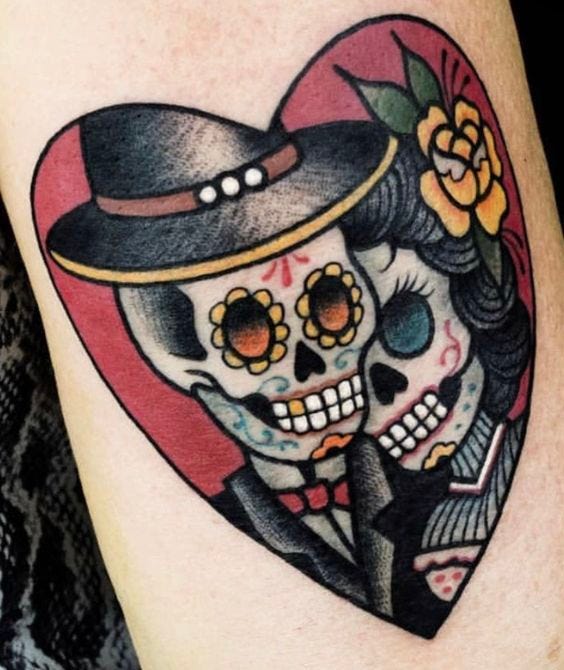
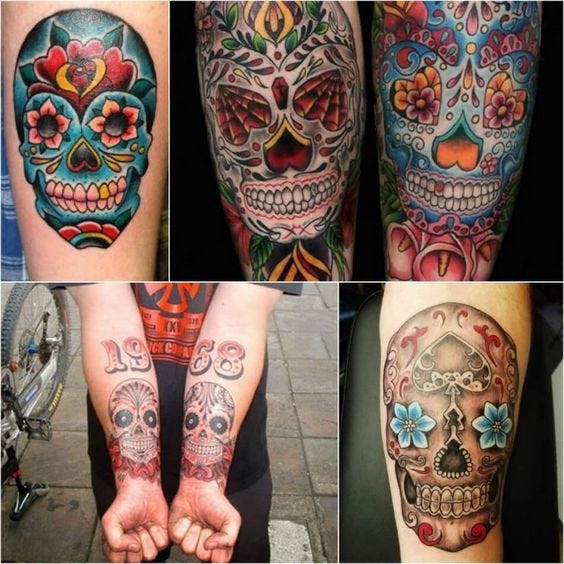
6. India
- Henna Tattoos: While not permanent, henna tattoos are traditional body art in India, often used during festivals and weddings. The designs are intricate and symbolic, incorporating floral and geometric patterns.
7. Western Cultures
- Traditional American Tattoos: Often associated with sailors and military personnel, these tattoos include motifs like anchors, eagles, and roses. The style is characterized by bold lines and vibrant colors. You can create traditional tattoos personalized with your name using AI technology.

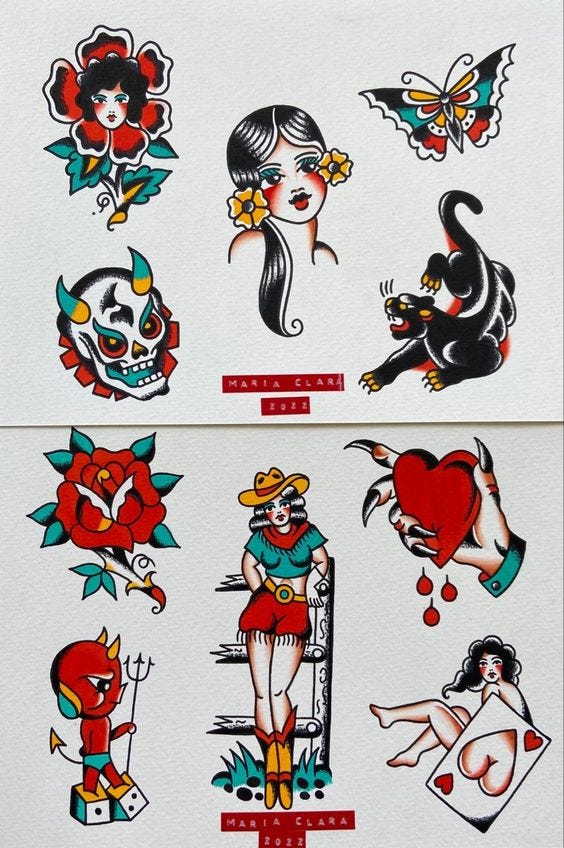
8. Thailand
- Sak Yant Tattoos: These traditional tattoos are created by Buddhist monks or practitioners and are believed to hold spiritual power. The designs often include sacred geometry, animals, and text in ancient Pali script.
9. Africa
- Tribal Tattoos: Various African tribes have unique tattoo styles that represent social status, tribal identity, and rites of passage. Designs may include geometric patterns, symbols, and animal motifs.
10. Scotland
- Celtic Tattoos: Known for intricate knot work and spirals, Celtic tattoos are steeped in history and symbolism, representing continuity, eternity, and the interconnectedness of life.
History of Tattoos in The United States
Tattoos in the United States began in the late 1700s and have continued to grow in popularity, reaching unprecedented levels today in terms of popularity and creativity.
What is the history of tattoos in the United States?
Tattoos in the United States began in the late 1700s, brought by sailors who had been inspired by indigenous tattooing practices encountered on expeditions. Over the 19th and early 20th centuries, tattoos were largely associated with sailors, soldiers, and sideshow performers, later becoming more mainstream in the mid-20th century, particularly after WWII.
Before the 1700s, many Indigenous peoples in the Americas practiced tattooing long before the 1700s. These tattoos often had cultural, spiritual, or social significance, symbolizing tribal identity, achievements, or rites of passage.
When were they first used and what was the purpose of using them initially?
In the U.S., tattoos were first used by sailors as souvenirs from their travels, symbolizing their journeys and service. Tattoos also served as a form of personal and spiritual expression, while later, military tattoos grew in popularity to show allegiance and record personal milestones.
When were tattoos popularized in America?
Tattoos were popularized in America during the late 19th century, gaining significant traction in the early 20th century due to sideshow performers and the introduction of the electric tattoo machine in the 1890s, which made tattoos more accessible and affordable to the general public.
When were tattoos illegal in the United States?
Tattoos were made illegal in several parts of the U.S., particularly from the 1960s to the early 2000s, with New York City banning tattooing from 1961 to 1997 after a hepatitis B outbreak. Many other cities and states enacted similar bans, which were gradually lifted as tattooing became more regulated and accepted.
Cool Tattoo Types That Look Awesome on Your Skin
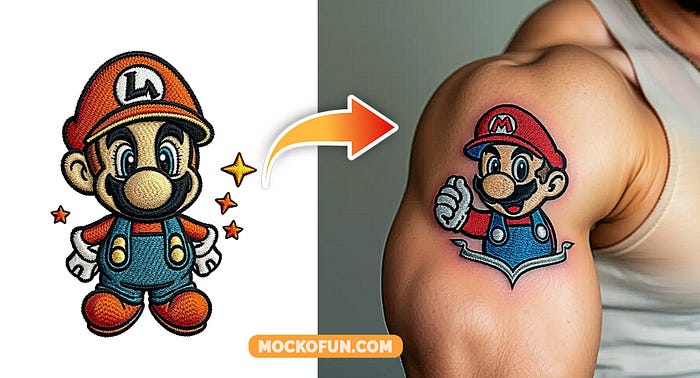
Embroidery Tattoos
These tattoos mimic the look and texture of embroidery, with stitches and thread effects that seem to “pop” off the skin. Crafted to look like real patches, embroidery tattoos add a unique, artistic twist to classic tattooing.
Sticker Tattoos
Sticker tattoos recreate the playful, nostalgic feel of collectible stickers, often complete with a “peeled” edge effect. They’re bright, bold, and bring a touch of childhood memories to body art, looking almost like they can be peeled off.
3D Tattoos
3D tattoos bring incredible realism to body art, using shading and perspective to create depth. From lifelike portraits to surreal illusions, these tattoos transform skin into a canvas of hyper-realistic visuals that seem to leap off the skin.
Conclusion: The Lasting Impact of Tattoo Art
Now you know lots of details about the origin of tattoos, from ancient rituals to a global art movement.
Tattooing has evolved across millennia while maintaining its role as a deeply personal and cultural practice. Today, tattooing is a respected art form, embraced by millions around the world as a means of storytelling, self-expression, and identity. With new tools and innovative techniques, tattoo art continues to grow, bridging the gap between tradition and technology.
